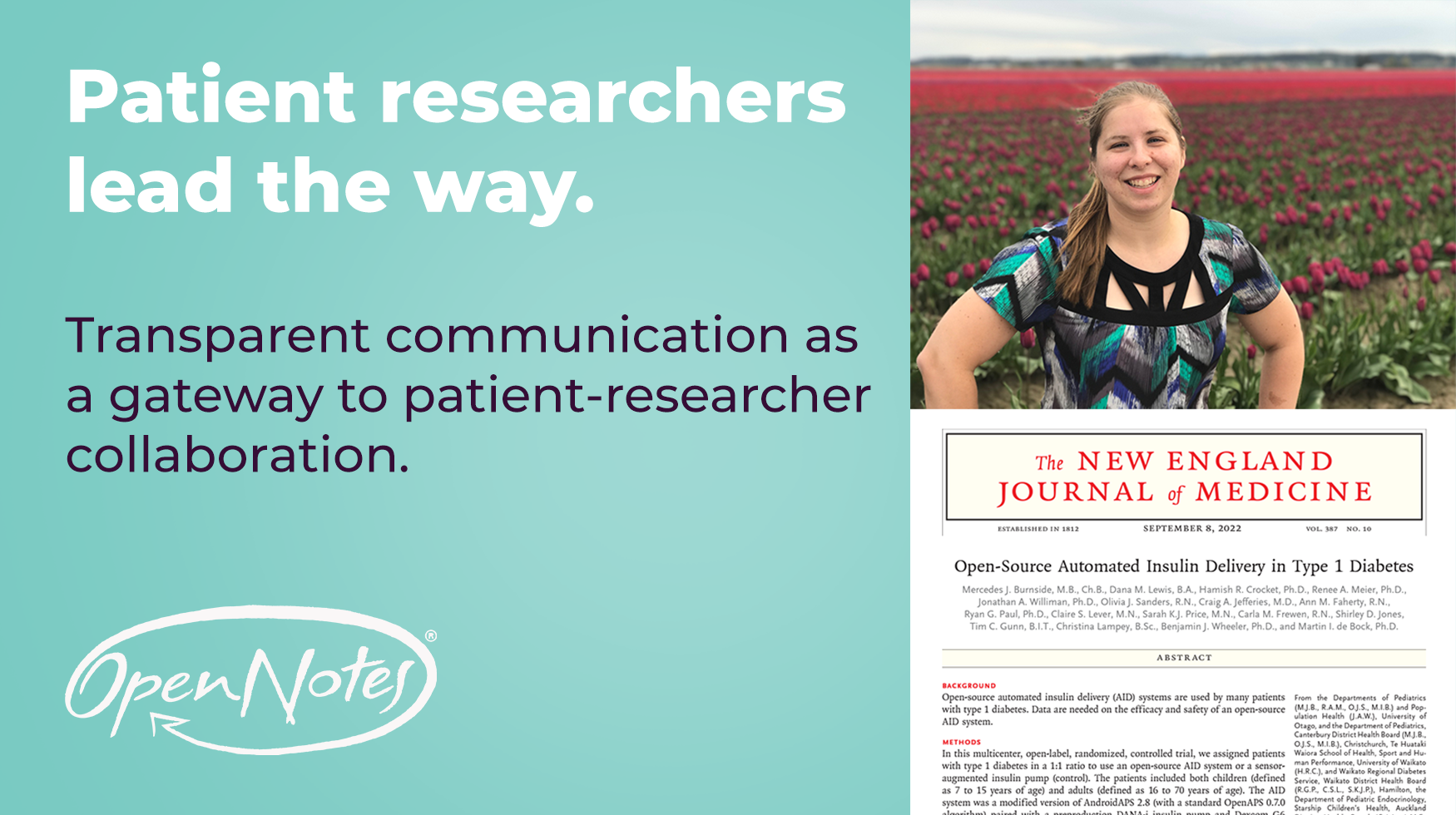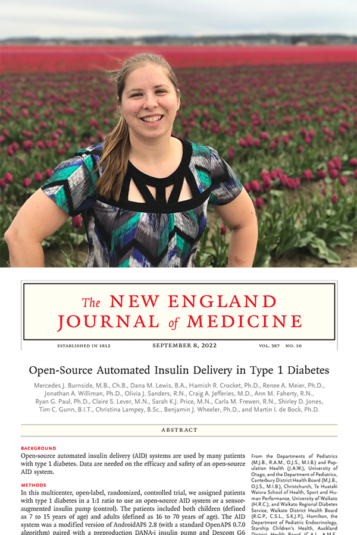
Patient researchers lead the way
Transparent communication as a gateway to patient-researcher collaboration
This month OpenNotes celebrates the work of Dana Lewis, BA—a person living with type I diabetes who is among the first authors on a randomized control trial (RCT) of treatment for diabetes published recently in the New England Journal of Medicine. (An author copy of the study can be found here.)
The CREATE Trial found that people with type I diabetes (both children and adults) benefited from an automated insulin delivery system using an open-source algorithm, regardless of their level of engagement with diabetes self-care and/or previous blood sugar outcomes. Importantly, the algorithm designed by Lewis and a community of people with diabetes proved both efficacious and safe, and in this RCT was more effective than a commercial approach to insulin delivery. (Learn more about the CREATE Trial here).
What does this have to do with OpenNotes?
This work is in and of itself important. But we’re excited also by the transparent, collaborative partnership that Lewis formed with traditional/academic investigators. It offers a glimpse into the future evolution of important healthcare scholarship. Both the leadership and design principles behind the CREATE Trial signal a remarkable change in the culture of research.
Lewis is not alone. “Patient-researchers”—each specializing in areas related to their various health conditions—are creating a body of work new to the landscape of healthcare scholarship. People such as Sara Riggare, PhD (Parkinson’s disease), Doug Lindsay (rare disease), Janet Freeman-Daily (lung cancer), and Andrea Downing (social media and data privacy) typify this emerging field of patient-led research.
Based on our own inquiries, OpenNotes has long believed that transparent communication leads naturally to collaboration. Healthcare leaders can be at their best when guided by informed, engaged, and empowered patient perspectives. Bottom line: Clinicians and researchers can help improve the quality of care when they partner with patients.
Related reading: A step-by-step guide to peer review: a template for patients and novice reviewers, BMJ Health & Informatics (Salmi, Blease)’





You must be logged in to post a comment.